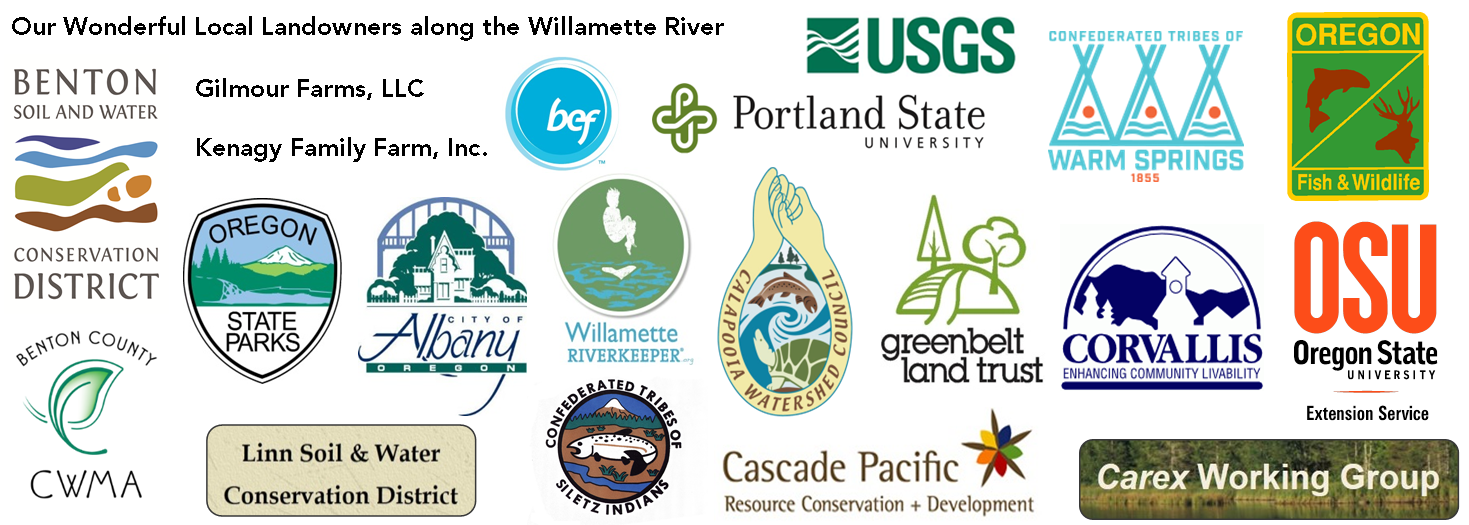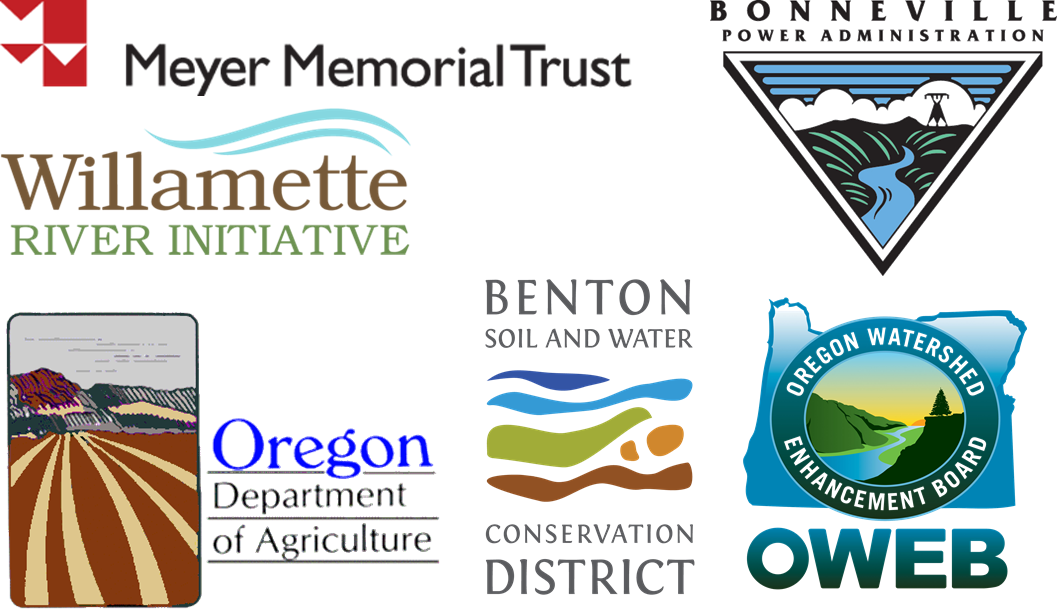Willamette Mainstem Cooperative
Who We Are
The Willamette Mainstem Cooperative (WMC) is a collaboration of landowners, organizations, and volunteers working together to promote, facilitate, and foster long-term stewardship of Willamette River resources with a focus on the Corvallis to Albany river reach.
What We Do
We collaborate with stakeholders to raise awareness about native and invasive plants along the river and address weed control priorities.

We provide information and opportunities for people to work together to achieve shared goals for river health.
- State of the Willamette – In 2020, we held a State of the Willamette Conference for practitioners.
- Willamette River Story Map: A Tour of Survey and Restoration Sites and Events
- Love Your River Workshops and Weed Pulls
We plan for the short and long-term management of aquatic and terrestrial invasives and PRIORITIZE species focus based on invasive plant population size and habitat impacts.
We surveyed close to 3,000 acres of riparian and aquatic habitats between Corvallis and Albany to identify high quality habitats and map populations of priority invasive plants.
| Species Found in Small Patches | Species Abundant, Yet Controllable | High Quality Habitat |
|---|---|---|
| Japanese Knotweed | English Ivy | ~15% or 385 acres of area surveyed |
| Purple Loosestrife | False Brome | mostly on public land |
| Scotch Broom | Water Primrose species | mostly in relatively undisturbed sites |
| Spotted Knapweed | Old Man's Beard | patches average six acres |
We protect high quality habitat through control and containment of target invasive plants.
We apply integrated techniques to control priority invasive plants on the Willamette River. Efforts have spanned from volunteer weed pulls to technical control methods implemented by contracted and licensed experts.
We monitor post-treatment site changes for impacts, success, and future management needs.
2016 Monitoring Report2017 Monitoring ReportWe plant and encourage natural recruitment of appropriate native aquatic and terrestrial plant species following invasive weed control treatments.
Funders
This project would not have been possible without the help of the following organizations:

